This article presents my personal view of current television advertising. Unlike most of my articles, it is not meant to be humorous. If I accidentally say something funny, forgive the lapse. In other words, prepare for a diatribe. Like any diatribe, it must first pretend to be fair and balanced.
Here goes: I recognize the value of advertising, its ability to introduce the public to new products or services, to remind us of those already available, and to inspire us to buy, or at least, consider, said products and services.
Furthermore, while I criticize advertising, I also appreciate it. I enjoy Geico’sseries of gecko ads, for instance, also Chantix’s recent run of ads featuring a charming, colorful turkey bent on quitting smoking. And, lest you think I’m only pleased by ads featuring cartoonish animals, let me say how much I admire Liberty Mutual’s “Maybe you could free Zoltar?” The ad begins by pitching its product, then provides an amusing, unexpected twist, as Zoltar’s little booth collapses, and we see him ride off on a unicycle (of all things) carrying a suitcase in each hand, thanking the lady who freed him, calling out, “Taxi!” as he leaves. The effect is indelible, an inspired advertisement—one that, like the Geico gecko and Chantix turkey ads, wears well. I look forward to seeing them again and again.
But I come not to praise advertising. … I weary of ads telling me to “Hurry! Don’t delay! Supplies are limited!” (Isn’t everything?) Rather than inspire … such ads stress me, make me want to look elsewhere, make me yearn to get back to the show they interrupted. Maybe those ads are effective; I suppose they are, but in my opinion, they contribute to our general unease, to the feeling that the world is awry and needs fixing. In short, they are a public disservice, a theme I’ll re-visit later.
Many of the commercials I see on TV have only two beneficial effects. First, they fund the shows I choose to watch. Second, they provide opportunities for bathroom breaks. For that, I thank them.
Speaking of funding, how much money is spent—in my opinion wasted—on medicine ads? Here’s an example: “Ask your doctor…” Why ask your doctor? Because people can’t buy the medicine directly; it must be prescribed. Now, what business do I, a private citizen, have prodding a doctor to prescribe something for me? He’s the expert. Not me.
I don’t know, say, “adalimumab” from “Adam.” The term is medical gobbledygook to me; I can only hope my doctor understands it … and understands the side-effects it may have (according to Wikipedia, they include numbness or tingling, vision problems, weakness in the legs, chest discomfort, shortness of breath, joint pain, hives, itching … not to mention the possible common side effects: upper respiratory infections, sinus infections, headaches, and rash). For people that really need the medicine, I’m glad it’s available, but for the rest of us … let’s not press doctors into prescribing it (in the off chance it’s just the medicine a commercial has convinced us we deserve).
When it comes to side effects, medicine commercials get pretty creative. They list the effects, as required by law, but they simultaneously distract you with pretty pictures. Try listening to such commercials with your eyes shut; “see” how you then feel about the product. You’ll find doing so an eye-opening experience.
Some medicine commercials flash their side effects on screen. (Other commercials often do the same thing with their legal disclaimers.) Have you ever tried reading them? Talk about fine print. Worse, their text might be displayed in light gray … on a white background. Good luck with that!
Lately, one or two medicine ads warn, “Don’t take if you are allergic.” Now, just how do you know if you’re allergic. I guess you must try the med first. … And if that turns out to be fatal? … Well, you were warned.
Some medical conditions are pretty rare. Peyronies Disease, for example, “affects thousands of men” but that’s out of a population of billions on the planet. Consequently, the odds of having that condition are so low, winning the lottery looks like a reasonable bet. What could be the incentive for a company to spend millions of dollars advertising a medical cure for such a rare condition? I know … as do you … MONEY! I shudder to think how much the promised cure costs.
Even with current drawbacks, medical advertisements are better regulated, more credible, than they were when medicine shows traveled the Old West ballyhooing “snake oil.” With that faint praise, let’s look at other TV ads.
You are probably familiar with late evening, late night ads promulgated especially on low budget TV stations. I’m speaking of ads this article refers to in its title, the ones saying, “But wait! There’s more!” And indeed, they do offer more: “A second one free!” or a free kitchen gadget (one you’d never buy separately). “Free,” they say, adding with low volume, “Just pay separate fee.” A person could easily fill up a home with all the “free” stuff offered. Of course, that person would go broke.
It seems the only way to get something free is to pay first. Isn’t that interesting? How can an item be free if you have to shell out money to get it? It’s a mystery … or a con game.
Then, there’s the phone number. How many times have you seen a phone number displayed, heard it repeated (in case you’re blind, I guess), and told “Don’t forget…” as the number is announced once again, with emphasis (in case you are hard of hearing) and displayed with dazzling, graphic effects (in case you’re deaf). Sometimes a phone number will be pounded into your brain so stressfully, so often, it will be the first thing you say when brought out of a coma.
Phone number repetition is only one of the ways advertising contributes to the dumbing down of America. Here’s another one: Not long ago, a commercial assured me (twice, as I recall) “six is greater than one.” The commercial aired multiple times on prime time television, and it had to deaden our brains to some extent.
Then there are ads that clearly show the advertised price of an item, but make you search microscopically for additional fees labeled sneakily as S&H (shipping and handling) or, more cleverly, P&H (processing and handling). Now, you know the cost of an item is what ultimately comes out of your bank account, NOT the “low, low introductory offer” blared out by hucksters. How stupid do ad men think we are? (Don’t answer that.)
One of my pet peeves is the way automobiles are marketed. Specifically, I despise how car commercials neglect discussing features, mileage and price.
Now, my grandson, an adult, by the way, says I am too harsh about that. He says, after all, cars generally have four wheels, an engine, etc., and it’s difficult for spokesmen to distinguish their brands from the competition. I see his point, but …
Am I really supposed to choose such an expensive purchase on factors like speed or sex appeal? Really? And must I agree with the ad that claims, “Love is what makes a Subaru a Subaru?” Really? Surely the car’s design, its materials, its production line have more to do with making the product what it is.
Many cars now offer safety features I’d like to know about. But without readily offered information, I can’t tell who offers what and how it works. Car commercials could easily fill me in. They seem almost embarrassed to do that.
Instead, they show me cars racing each other—something they warn against. They show cars driving to exotic locales, beautiful spots … as if I don’t know that every other car can do the same. Instead of information, automobile advertisements offer inspiration, something a church is better fashioned to do.
Bad as car commercials are, they are hardly the worst. Consider ads devoted to selling us products that make us look or smell better. For example, bad breath ads give me disgusting, close-up images of people, mouths agape, right in my face. I don’t know what brands such ads push. I turn my face to one side defensively and wait for some other commercial to request my attention.
Support local, independent news – contribute to The Fallon Post, your non-profit (501c3) online news source for all things Fallon.
Never miss the local news -- read more on The Fallon Post home page.
The Fallon Post -- 1951 W. Williams #385, Fallon, Nevada 89406


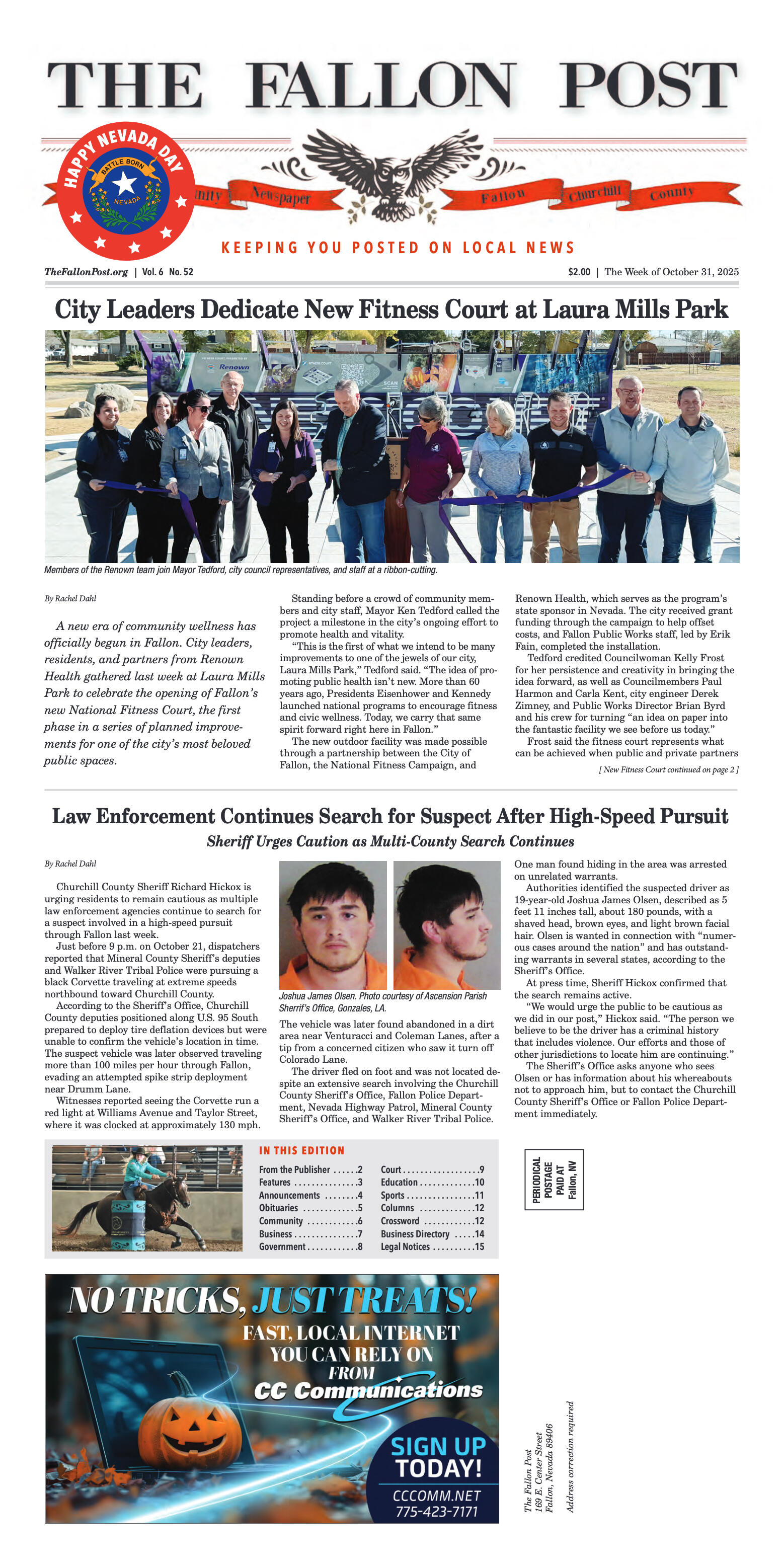
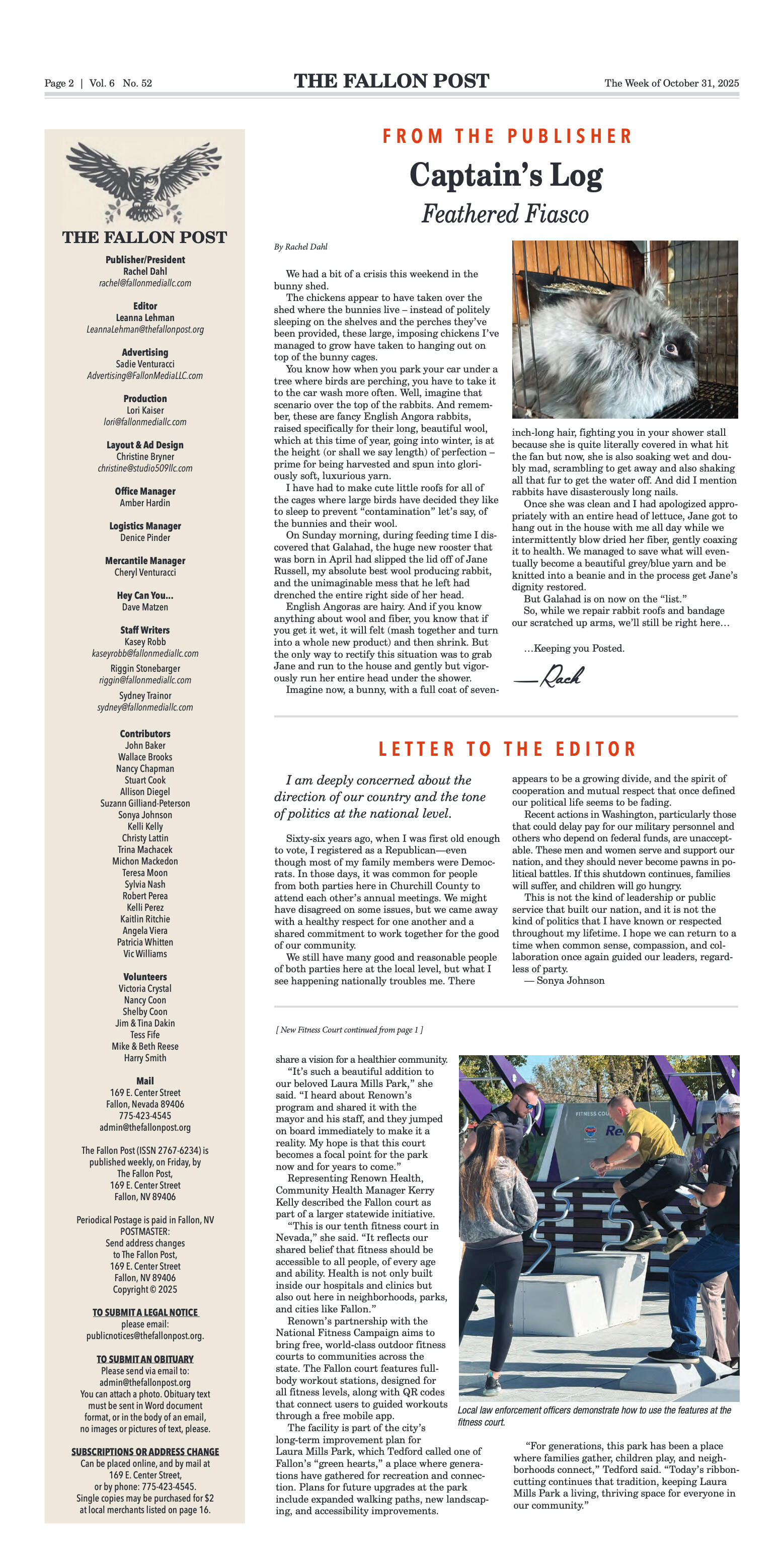
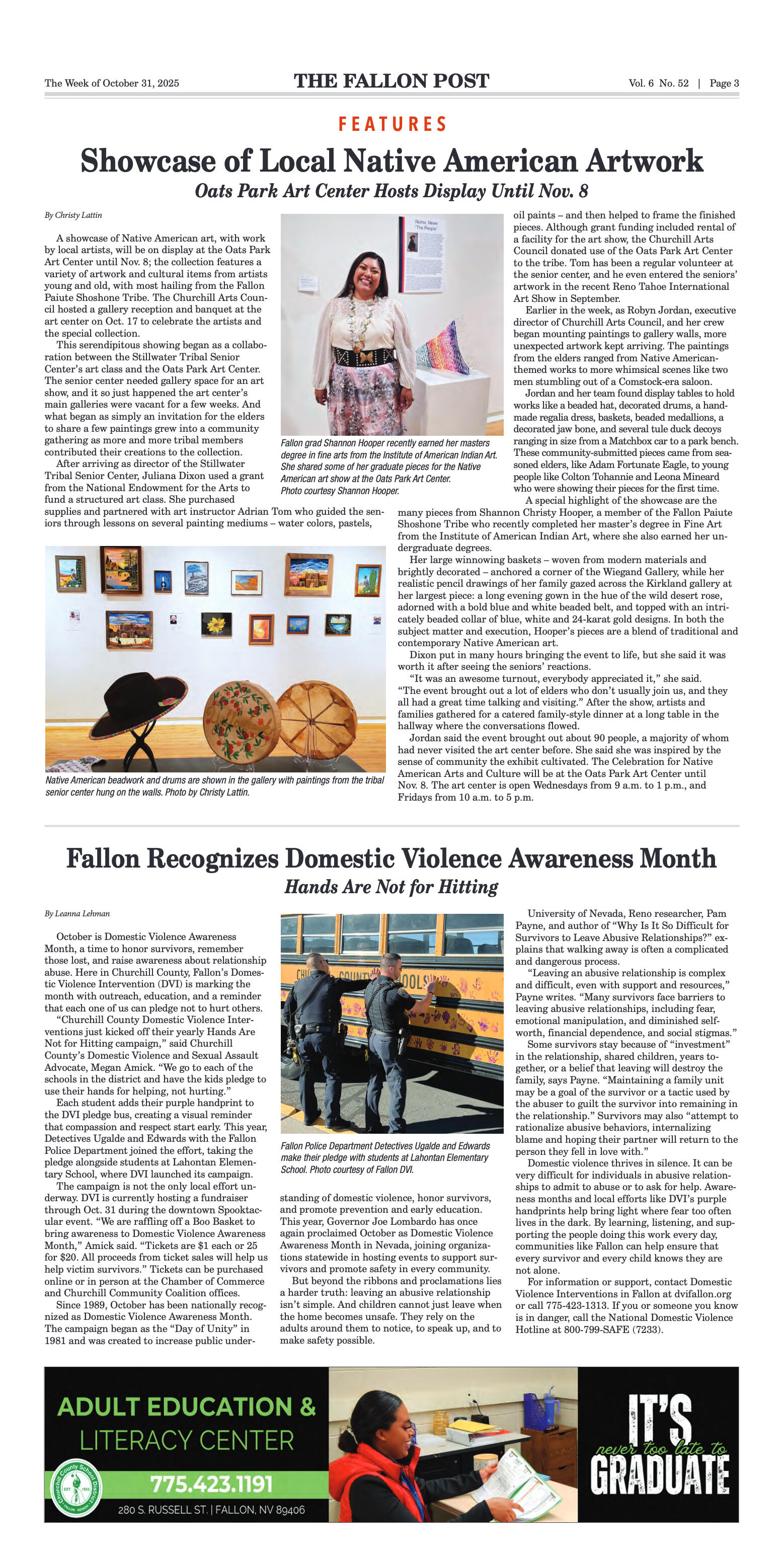
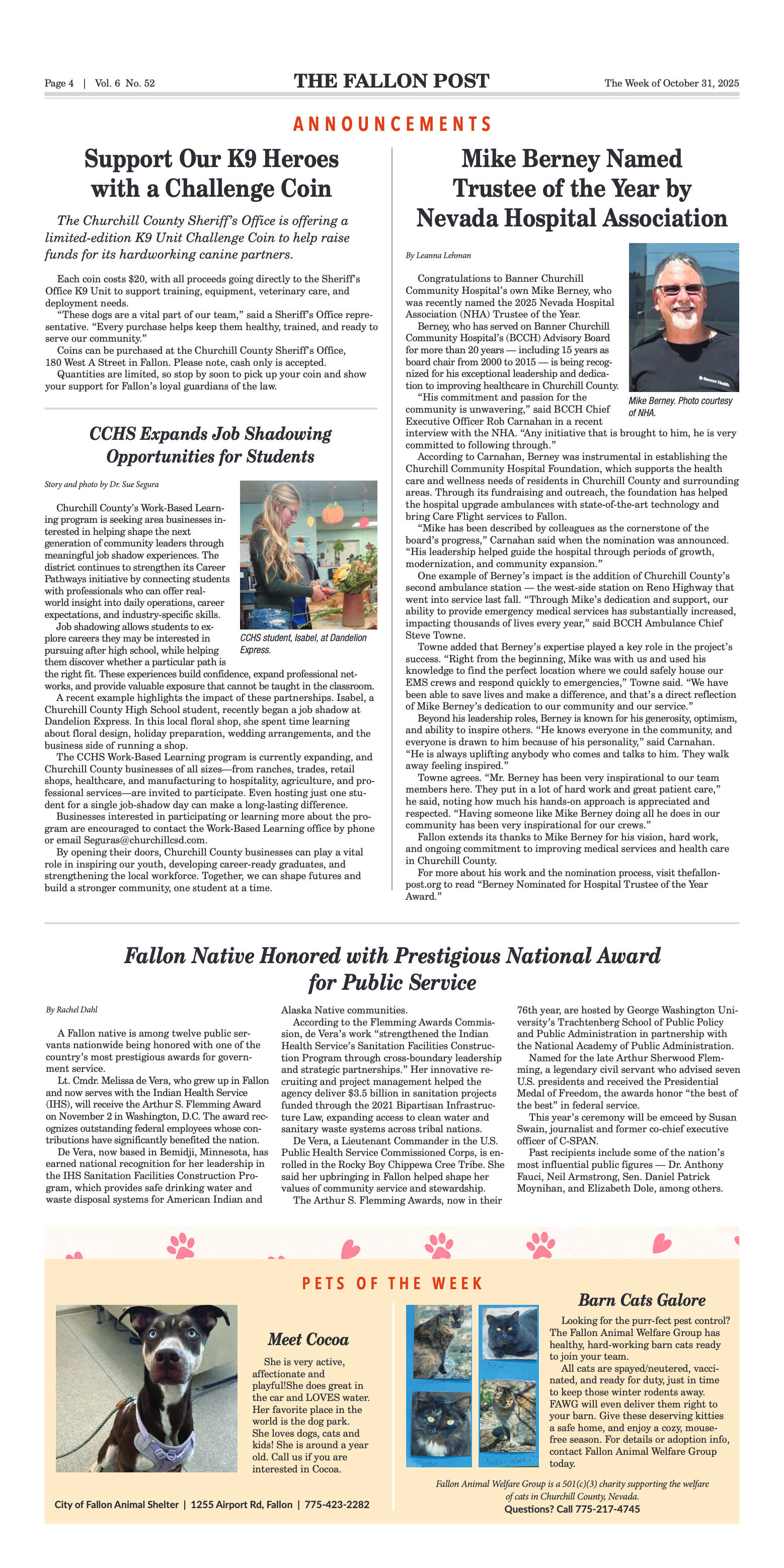



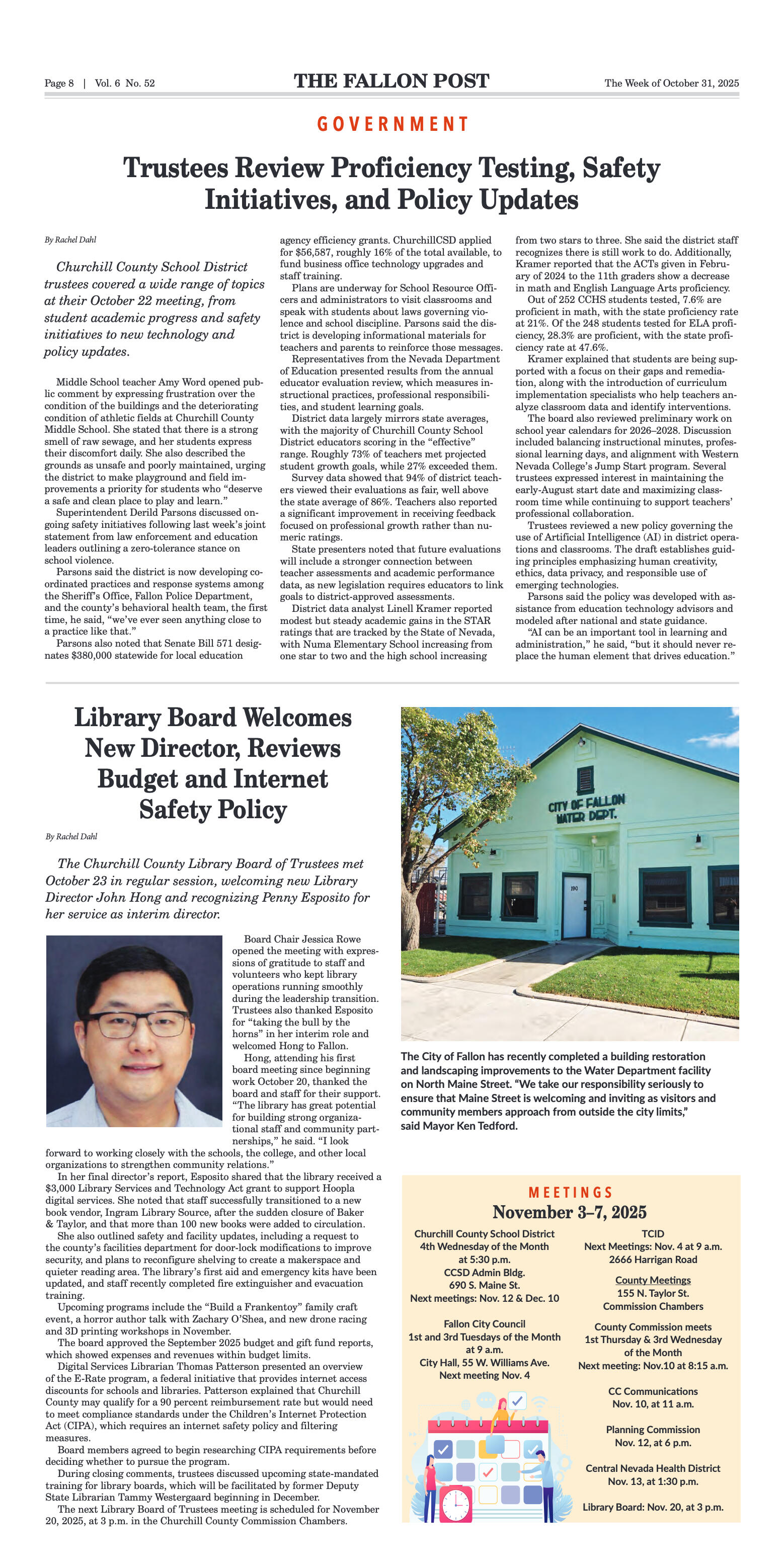
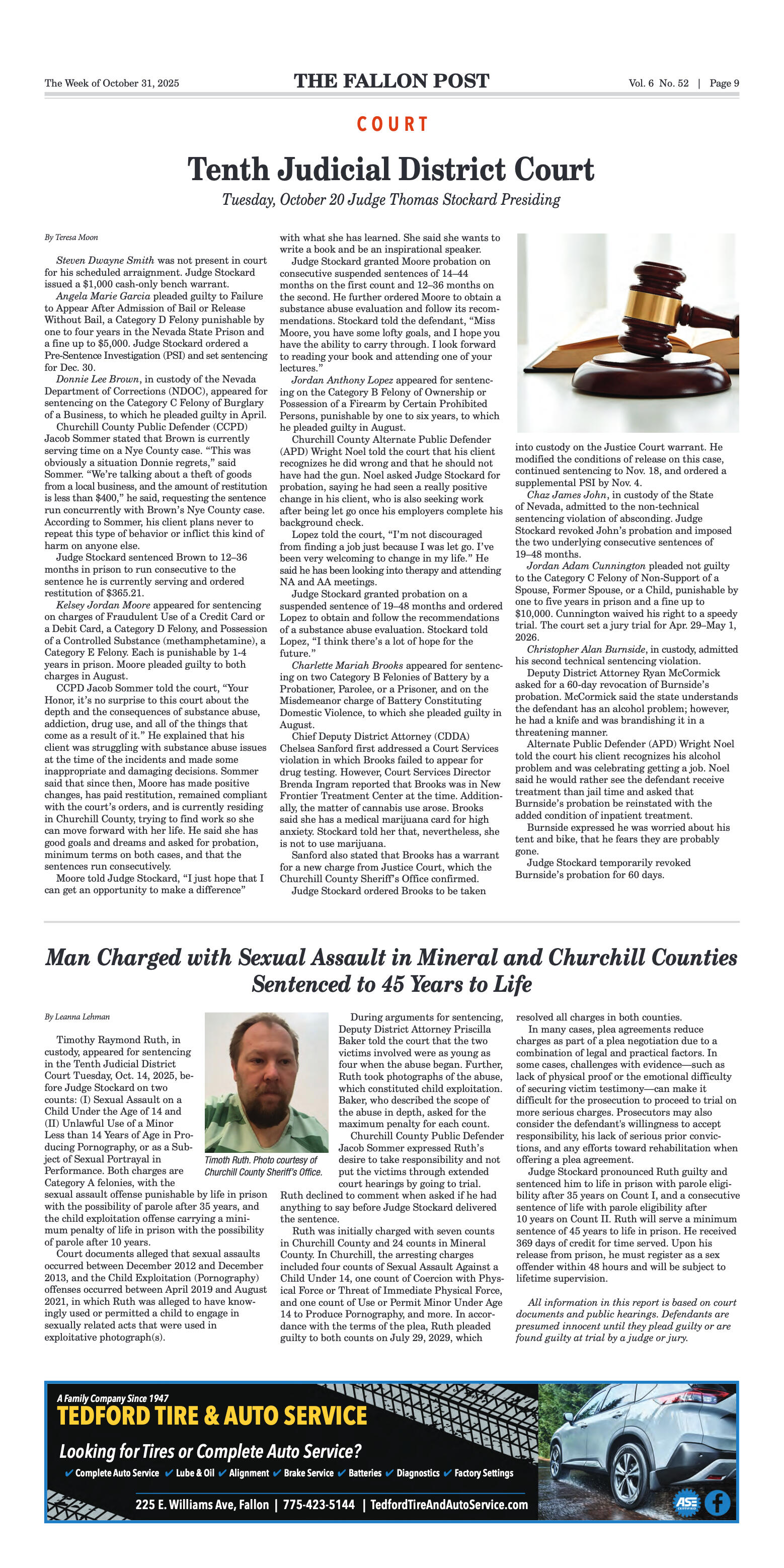
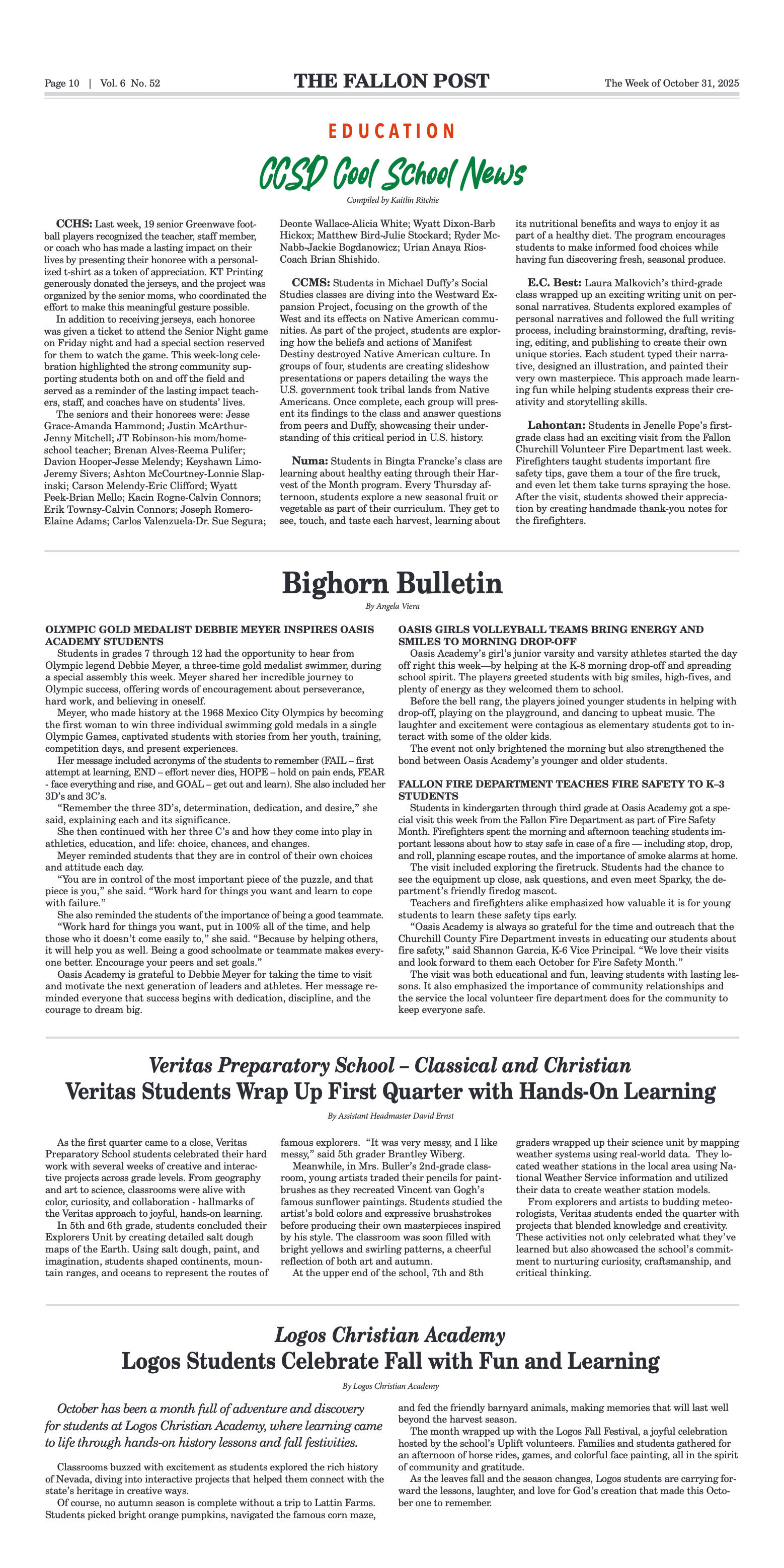
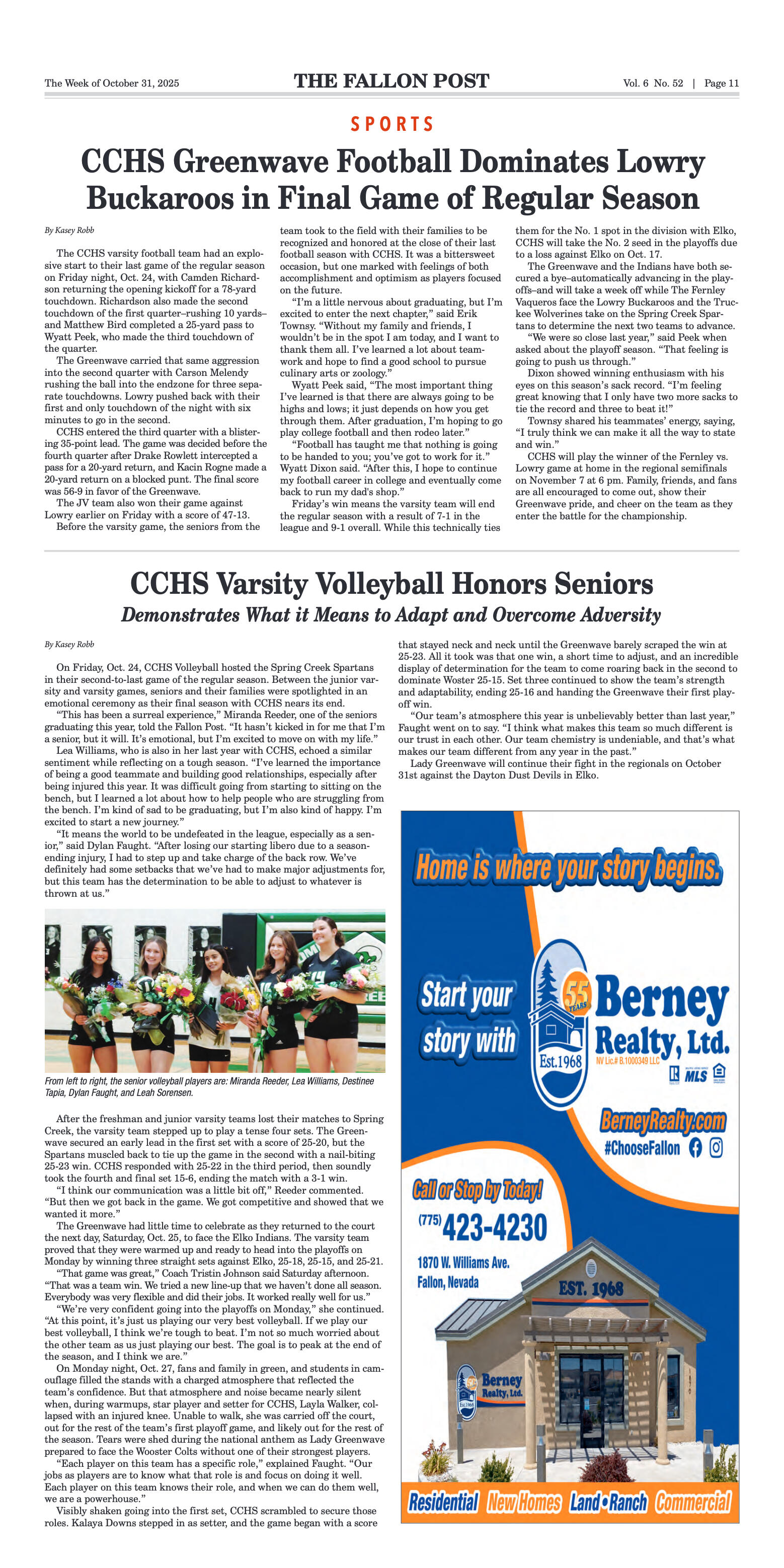
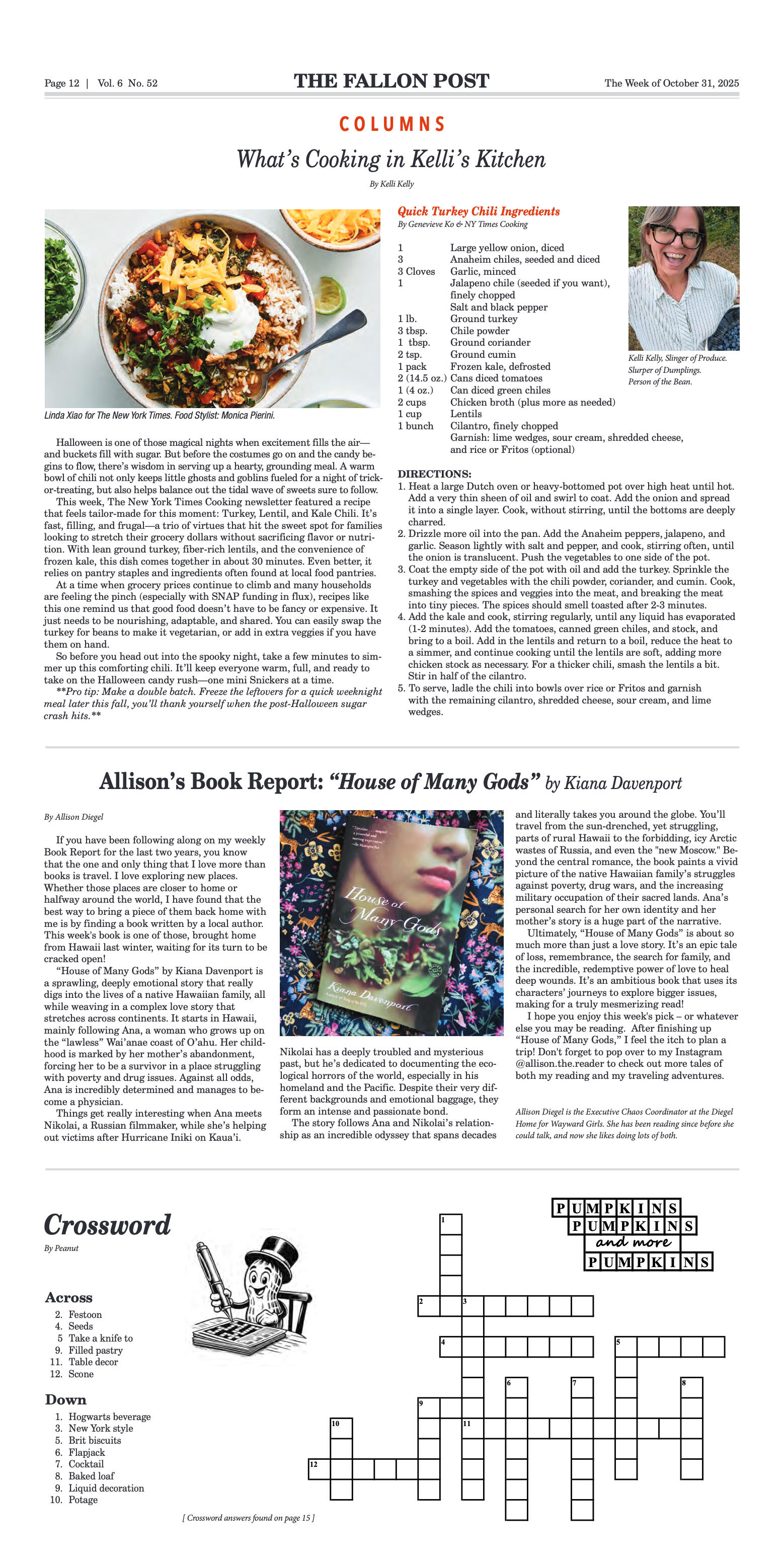
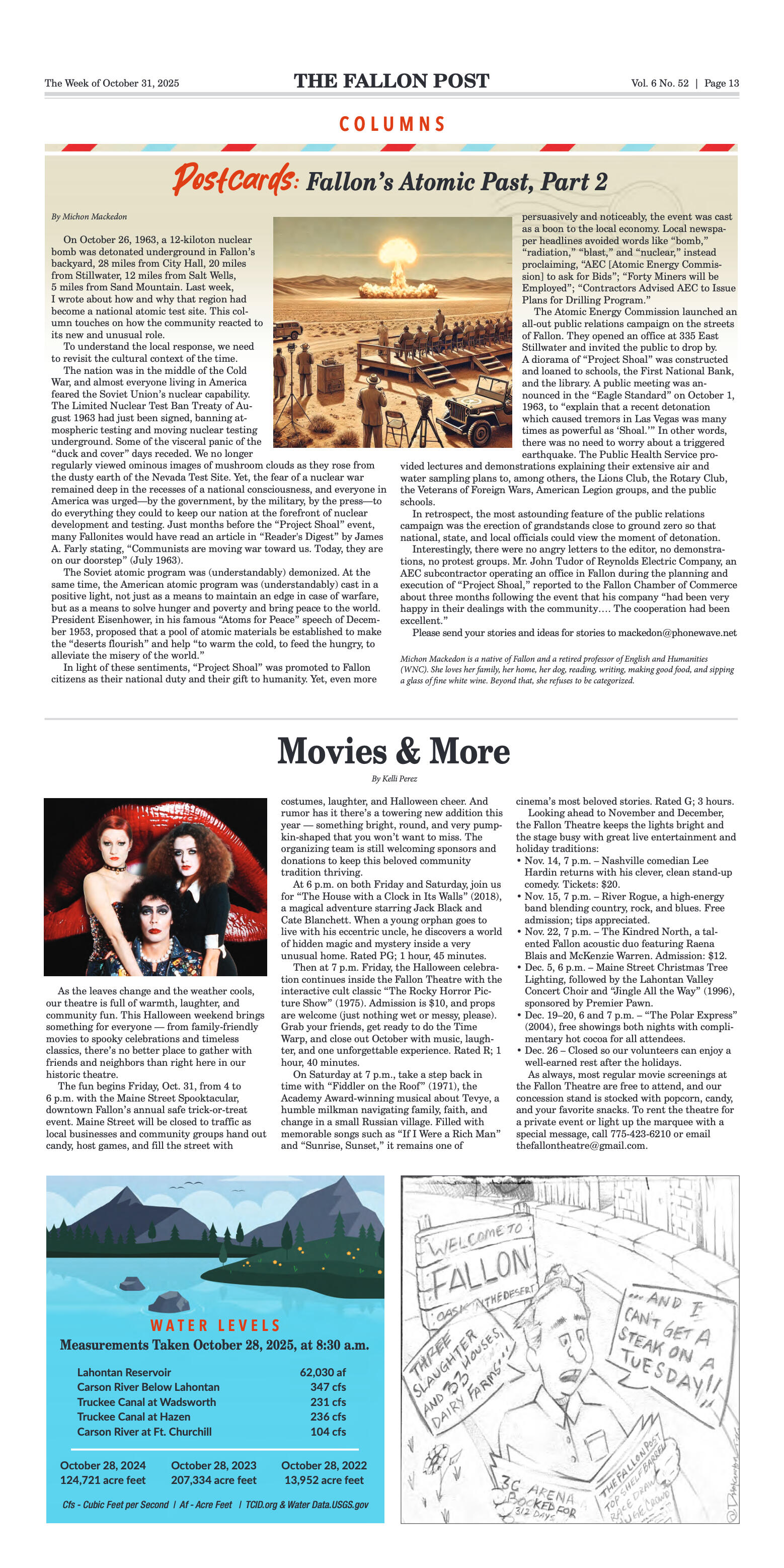
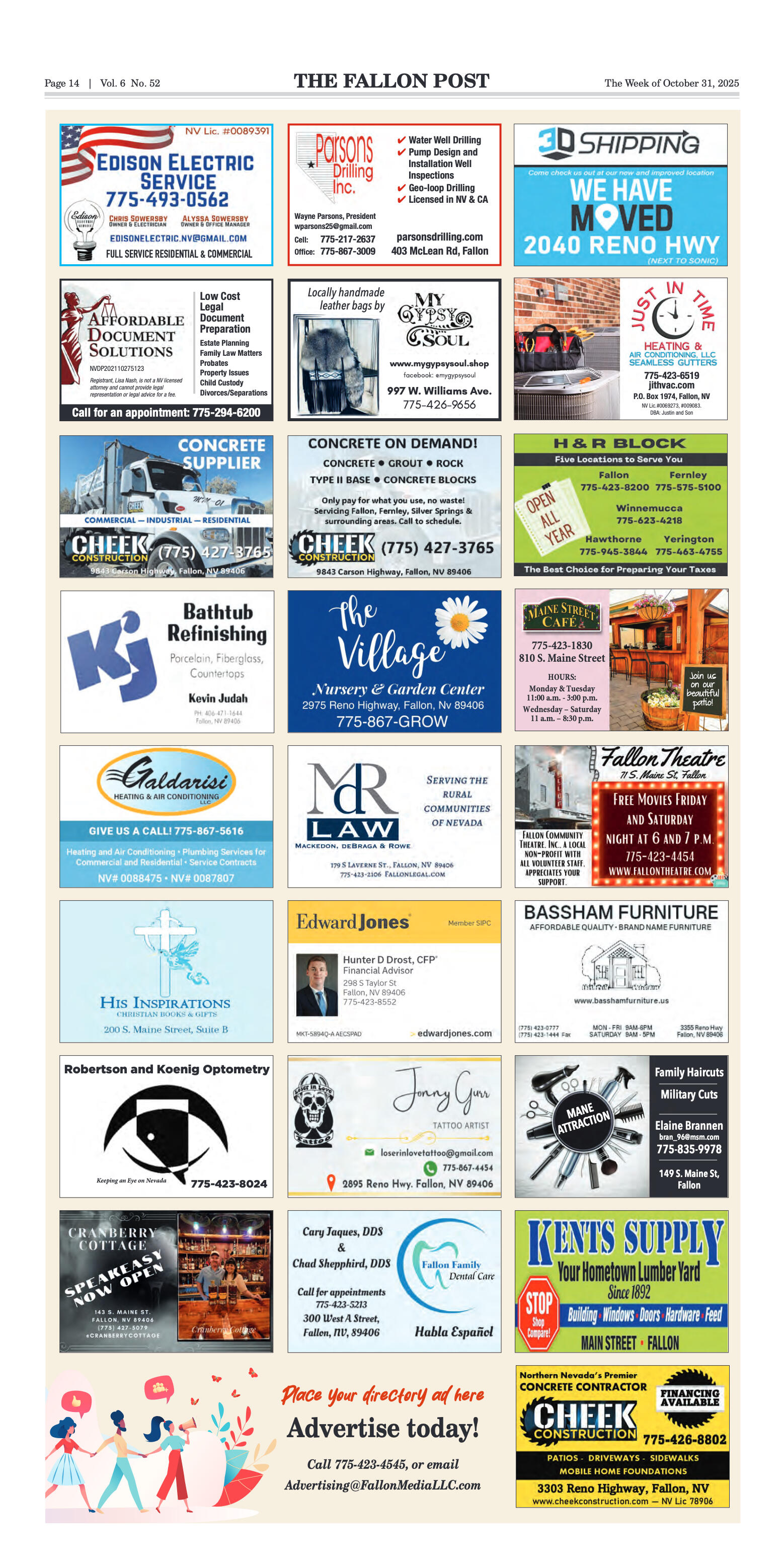
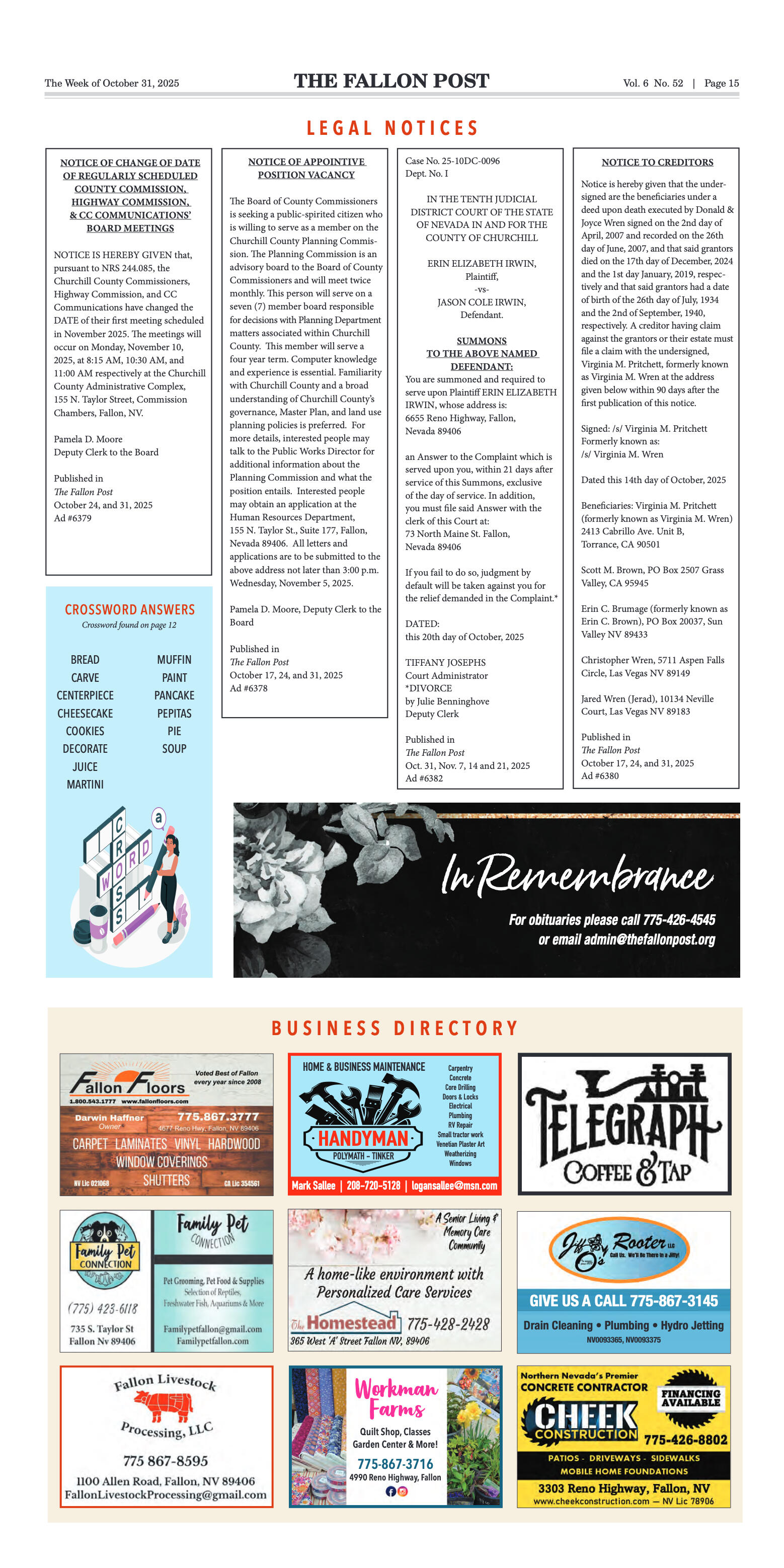

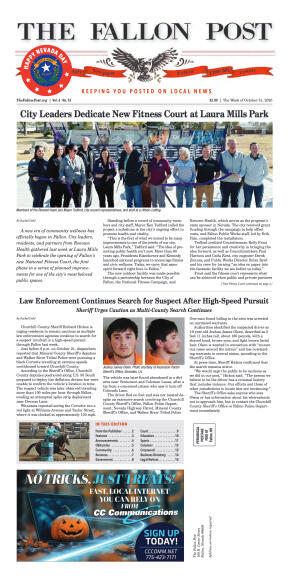
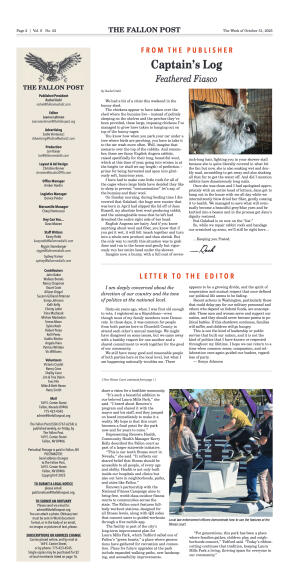
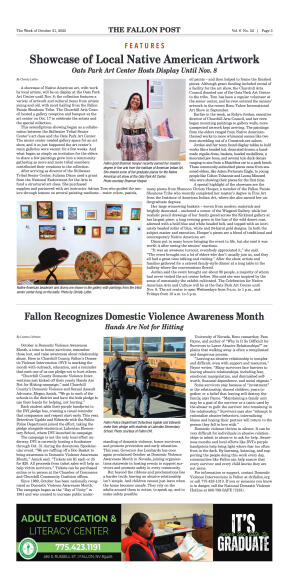
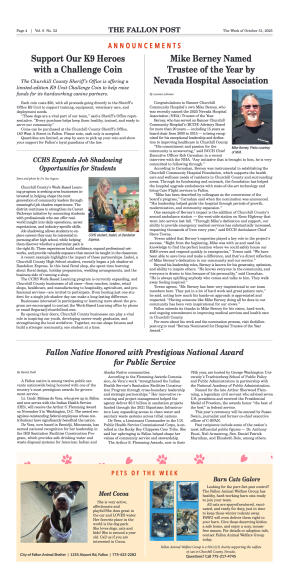

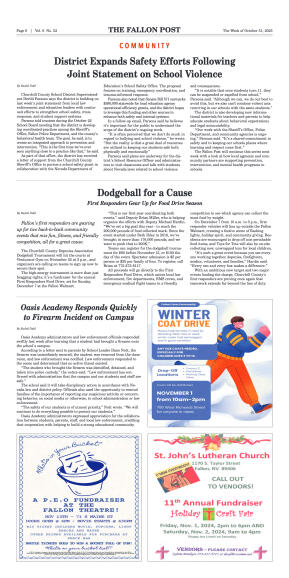

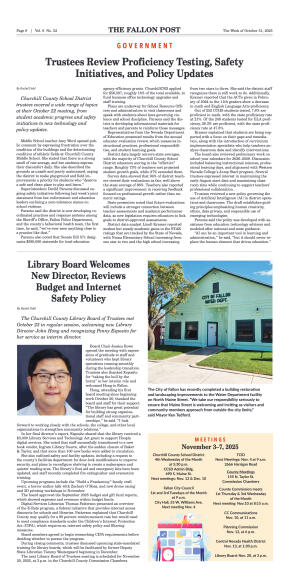
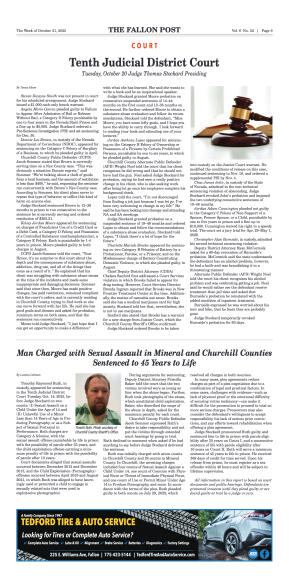

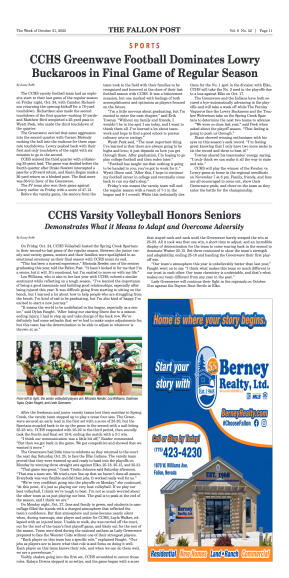

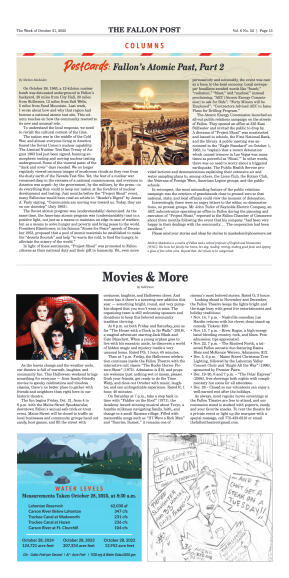
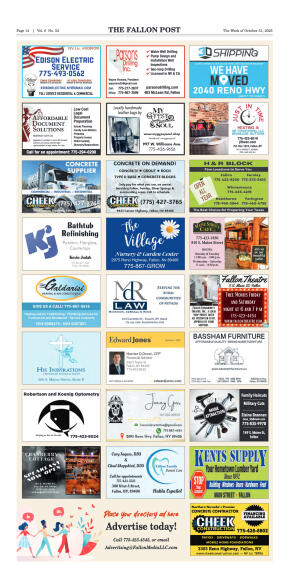
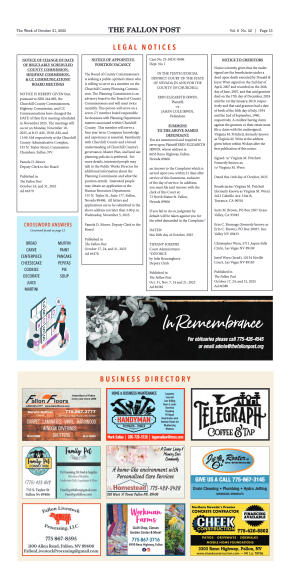








Comment
Comments